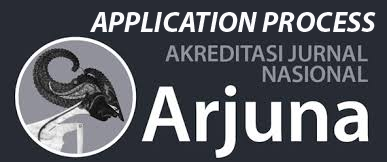Efisiensi Penggunaan Faktor Produksi Pupuk pada Usahatani Cabai Merah di Desa Lamokuni Kecamatan Wonggeduku Barat Kabupaten Konawe
DOI:
https://doi.org/10.59024/semnas.v2i2.490Keywords:
Efficiency, Fertilizer, Farming, Red ChiliAbstract
The purpose of this study was to determine the Level of Efficiency of Fertilizer Production Factor Use in Red Chili Plants in Lamokuni Village, Wonggeduku Barat District, Konawe Regency. The research location is in Lamokuni Village, Wonggeduku Barat District, Konawe Regency. The selection of the research location was carried out intentionally (purposive), with the consideration that Lamokuni Village, Wonggeduku District, Konawe Regency is one of the areas that has very good potential in developing red chili farming. The researcher determined that the entire population of 30 people were made respondents, which is referred to as a census. The analysis of production factor efficiency uses the price efficiency calculation formula based on the use of the Cobb-Douglass production function technique. The use of fertilizer production factors is not efficient for red chili farming in Lamokuni Village, Wonggeduku Barat District, Konawe Regency. This is indicated by the efficiency value which is not equal to one (NPMx ≠ 1), namely; the efficiency value of SP 36 is 0.70, the efficiency value of NPK Ponska is 0.87, the efficiency value of NPK Mutiara is 0.66 and the efficiency value of liquid organic fertilizer is 2.07. This means that the use of fertilizer production factors in the farming business is still very wasteful.
References
Carkini, R., Rochdiani, D., & Yusuf, M. N. (2014). Analisis efisiensi penggunaan faktor-faktor produksi pada usahatani padi sawah (Studi kasus pada Kelompoktani Bumi Luhur Desa Indrajaya Kecamatan Salem Kabupaten Brebes). Jurnal Ilmiah Mahasiswa AGROINFO GALUH, 1(1), 33-42.
Edy, J., Jannah, N., & Syahfari, H. (2017). Pengaruh pupuk NPK DGW compaction dan pupuk kandang sapi terhadap pertumbuhan dan hasil tanaman cabai merah besar (Capsicum annuum L.) varietas Arimbi seiring dengan bertambahnya populasi penduduk Indonesia, akan konsumsi terhadap cabai. Agrifor, XVI(November 2014), 59–64.
Fidalia, L. (2018). Efektivitas kelompok tani dalam meningkatkan pendapatan usahatani cabai merah (Capsicum annuum L) dan jagung (Zea Mays). Jurnal Pertanian.
Lingga, P., & Marsono. (2010). Petunjuk penggunaan pupuk. Penebar Swadaya.
Maruapey, A. (2017). Pengaruh pupuk organik limbah biogas kotoran sapi terhadap pertumbuhan dan produksi tanaman cabai merah keriting (Capsicum annum var. Longum). Jurnal Agrologia, 6(2), 93–100.
Nurahmi, T., & Mahmud, S. R. S. (2011). Efektivitas pupuk organik terhadap pertumbuhan dan hasil cabai merah. Jurnal Floratek, 6, 158–164.
Prabowo, B. (2011). Statistik tanaman sayuran dan buah semusim Indonesia. Penebar Swadaya.
Pranata, S. A. (2010). Meningkatkan hasil panen dengan pupuk organik. PT Agromedia Pustaka.
Putra, I. G. N. Y., Antara, M., & Suardi, D. P. O. (2018). Efisiensi penggunaan faktor-faktor produksi pada usahatani padi subak carik tangis Wongaya Gede Tabanan Bali. Jurnal Manajemen Agribisnis, 6(1), 70-77.
Sarlan, M. (2020). Analisis efisiensi penggunaan faktor-faktor produksi pada usaha tani bawang merah di Kecamatan Pringgabaya Kabupaten Lombok Timur. Journal Ilmiah Rinjani (JIR), 8(2), 132-142.
Sugiono. (2010). Metode penelitian tindakan kelas: Pendekatan kuantitatif, kualitatif, dan R&D. Alfabeta.
Syamsuddin, M. R. R. T. (2020). Analisis pendapatan usahatani cabai merah di Desa Talang Kemang Kecamatan Rantau Bayur Kabupaten Banyuasin Provinsi Sumatera Selatan. Ilmu Pertanian Agronitas, 2(2), 7–16.
Ummah, N. (2011). Analisis efisiensi penggunaan faktor-faktor produksi pada usahatani cabai merah keriting di Desa Ketep Kecamatan Sawangan Kabupaten Magelang.
Downloads
Published
How to Cite
Issue
Section
License
Copyright (c) 2023 Prosiding Seminar Nasional Manajemen dan Ekonomi

This work is licensed under a Creative Commons Attribution-ShareAlike 4.0 International License.








